Managing exposure time Speed
The exposure time setting lets you control how motion appears in your image, allowing you to capture movement mid-stride or to create motion blur. All you have to do is change the shutter speed to suit the subject’s movement and correctly hold your DxO ONE to avoid any unwanted blur.
You can select the shutter speed you want in shutter priority (S) mode. Your DxO ONE will then determine the aperture setting needed to correctly expose the image.
-
For sharp photos:
Select a shutter speed between 1/30 s and 1/20000 s (the fastest speed available).-
In bright light:
The main challenge involves assessing the subject’s movement. Here are a few reference points to make it easier:
A shutter speed of 1/60 s is suitable for a formal portrait.
If the subject is in motion, you’ll need to use a faster shutter speed to have a fully focused photograph.
Select the 1/125 s setting if your subject is walking at a moderate pace.If your subject is moving faster, especially if he or she is playing a team sport such as soccer, rugby, or football, shoot with a shutter speed of 1/250 or higher to capture the players’ movements.
If you are photographing a waterfall and want to capture individual droplets, set the shutter speed to at least 1/500 s.
Knowing which shutter speed to use in a given situation is also useful when shooting in Auto or semi-auto mode because it helps you understand what you need to change in the settings to achieve the desired result.
-
In low-light conditions:
It’s best to use a tripod if you can, especially if you’re shooting at a speed below 1/15 s. The tripod accessory stabilizes your DxO ONE and prevents motion blur. For the same reason, even if you’re using a tripod to take your photos, use either the two-second timer option or the Wi-Fi remote control when photographing with a long exposure time to avoid moving the camera when you press the shutter button.
-
(Photographer Florence AT)
Dusk occurs a few minutes after sunset: the sky gradually changes to a dark blue before turning black. When photographing a landscape when there is still a bit of light, wait until city lights turn on to create contrast in the midnight-blue sky. Once again, you should place your DxO ONE on a solid surface and/or attach it to a tripod. Select the lowest sensitivity level, 100 ISO, to avoid any digital noise, and use a longer exposure time of around two seconds for your first photograph. After your first photo, adjust your settings until you achieve the desired result. Depending on the artistic effect you want to create, increase or decrease your shutter speed, and modify the exposure by closing the diaphragm as your exposure time increases.
If you want to shoot handheld, select an exposure time that’s long enough to compensate for the low lighting, but don’t let your shutter speed drop below 1/30 s—this value will capture the ambience when shooting indoors. If you need to, turn on as many artificial lights as necessary to avoid having to increase the sensitivity too much. It’s impossible to photograph movement in low light while shooting handheld without increasing the sensitivity. By doing so, however, you run the risk of introducing digital noise into your final image.
-
Playing with motion blur:
From 1/15 s and up to 30 seconds of exposure time.-
In bright light:
Long exposure time can result in an overexposed image if the light is bright. By using the DxO Optical Adapter to attach a neutral density (ND) filter to the lens, you can reduce the amount of light entering the camera (as if you had closed the diaphragm) and use a longer exposure time than would be otherwise possible. This lets you create a blurred effect with running water, for example, even in full sunlight.
In the same way, you can use an ND filter to obtain a motion blur while photographing subjects in motion.
-
In low-light conditions:
It’s very easy to create motion blur when photographing in low-light conditions. By maintaining a low sensitivity value, you can quickly gain access to slow shutter speeds. Simply photograph a subject in motion or move your DxO ONE during the exposure time. There’s no formal rule—just try different techniques until you get the effect you’re looking for.
-
When using a tripod, motion blur occurs when a subject moves in front of your lens, but you can create the same effect by rotating the head of the tripod and setting the camera to a shutter speed of one second or more. This produces a very even blur.
Without a tripod, the result will be less predictable, but also more artistic!
Feel free to improvise!
One important detail—make sure your battery is fully charged before you start shooting. The long exposure times and cold winter temperatures take a lot of power!


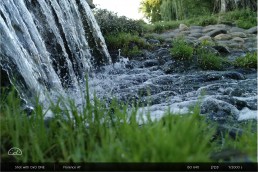
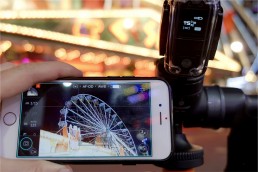
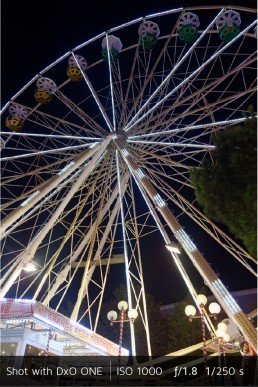
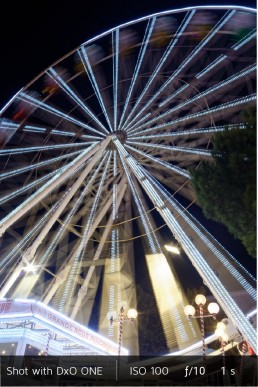
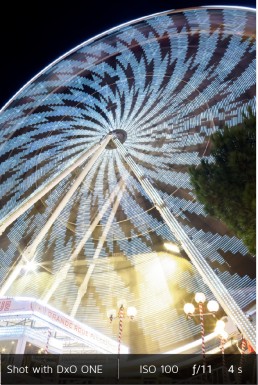
 Download page
Download page